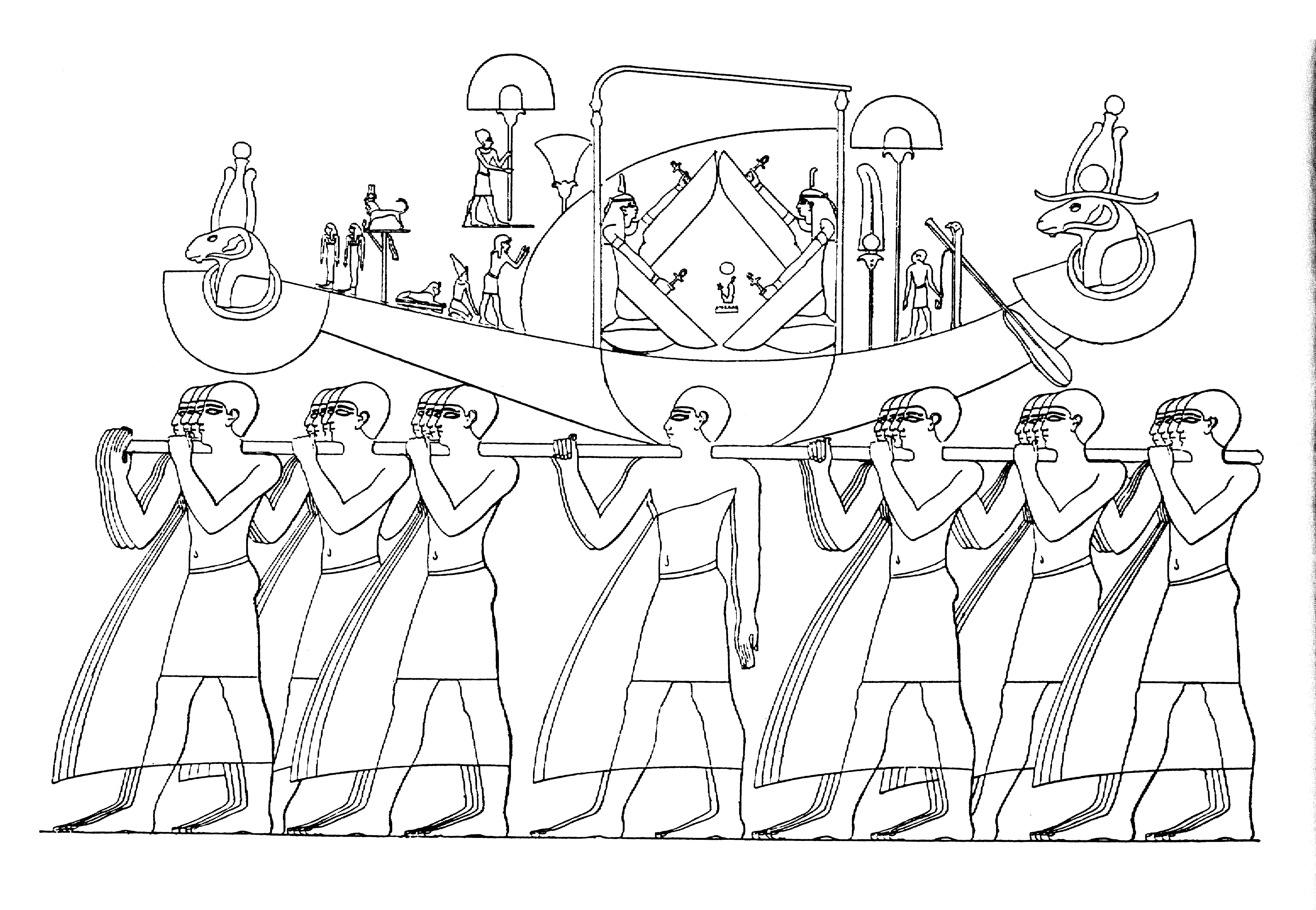Another answer to the question 'Where is the ship?' is found in this picture from Egypt (Wilkinson):
The ship of the sun god (the year) is carried by lesser gods (toko te ragi). They are 3*4 + 1*2 + 3*4 = 12 + 2 + 12 = 26 and the idea obviously expressed is that 26 * 14 = 364, the counting being done by way of half-months (28 / 2, i.e. the time when the moon is visible = seen by the sun). Probably the rhombic shape formed by the four arms in the middle of the ship also tells about the moon (4 * 7 = 28). A little circle in the middle of this rhomb may be the full moon (or the time of 'breaking the coconut' = new year). The mid section of the ship is balancing two half-years (rei mua and rei muri), which are written assymmetric (first half-year is shorter north of the equator). The number of arms of the lesser gods who carry the ship are 6, counting only those arms closest to us viewers, and they are bent in the middle (at the elbows), i.e. there are 6 * 2 solar months in a year. Counting the rest of the visible arms (of the gods closest to us) we get 8 such (more or less fully visible). Then we also can discern 3 + 3 + 0 + 1 + 3 + 3 + 3 = 16 additional (not more than partly visible) ones. The total is 12 + 8 + 16 = 36 (obviously standing for 360 days). Counting feet of the lesser gods: 6 + 6 are more or less fully visible, then there are 13 only partly visible at left and 13+ only partly visible at right; there is a fraction more at right (as the time from summer solstice to winter solstice is somewhat longer than the time from winter solstice to summer solstice). Notice also that there are two suns in the hat of the ram in rei muri, and there is a wavy brim in the hat (expressing 'under water' I believe). The collars in rei mua and rei muri also indicate the underworld, while the visible world in the light is expressed by the similarly looking 'fans' (in the Swedish language: 'solfjäder' = sun-feather) close to the middle of the boat. |
